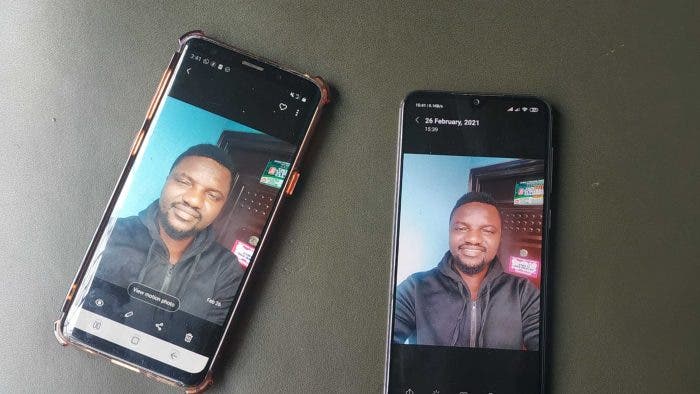Every month, a good number of smartphones hit the market which gives users more options. However, with phone users, there is usually a preference. While some prefer a good design, others will focus on performance while some love the cameras. Many users are more complicated such that they prefer a combination of these features. However, a smartphone is almost never perfect. You can almost never get it all on all departments, otherwise, the price might just be its imperfection. If you are a lover of selfies and its selfie or nothing, this top 10 smartphones for selfies list is for you
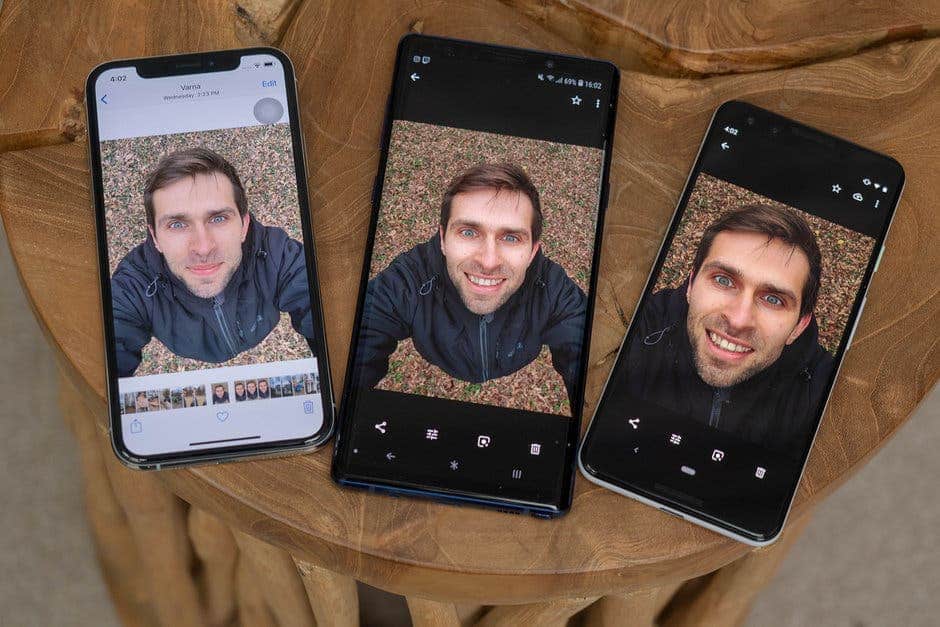
Presently, smartphones for selfies have advanced so much that we now get rear camera quality upfront. Many smartphones in the industry now come with dual selfie cameras or front camera sensors above 20MP. However, we must understand that a great selfie image is not dependent on pixel size or dual camera status. There are a lot of software optimizations that also guarantee top-notch output. Many selfie phones now come with special beautification features in addition to top-notch AI features as well as portrait mode. We have compiled a list of top smartphones for selfies that you can buy this month.
1. Oppo Reno 5 Pro
Before we look at the features that make the selfie performance of this phone great, let’s look at its specification. On the front, this device uses a 32 MP with an aperture of f/2.4 (26mm (wide), 1/2.8″, 0.8µm) and it supports HDR, 1080p@30fps, and gyro-EIS. However, it’s not just the pixel and aperture that make the front camera good. Oppo included a couple of features like portrait selfie mode and multiple filters for high-quality images.
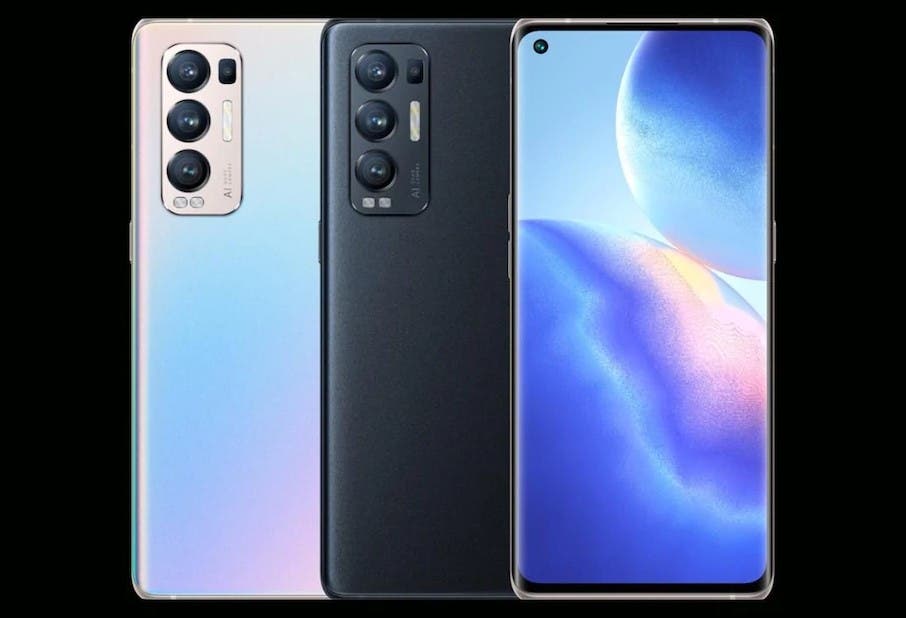
The Oppo Reno 5 Pro comes with AI scene enhancement even for the front camera. With this feature, you can enjoy taking selfies without the trouble of editing. One of the features of AI enhancement is that it automatically recognizes the photography scenery light levels using an AI algorithm and optimizes the settings to make every image and video clear and vibrant.
Furthermore, we have the Night Flare Portrait mode feature that guarantees striking night portraits. The flare background lights deliver auto-refined night portraits with cool brightness and focus. Regarding this feature, Oppo said, “Don’t let the lighting limit you. Shoot clear and bright videos, even in dim or backlit settings”.
However, the emphasis for this Oppo phone is actually its video capacity. The front camera 1080p@30fps video at best, even the rear main camera gets 4k@30fps video recording at best. However, both support the AI Highlight Video feature which kinda makes up for that. This feature analyses the environment and automatically sets a suitable setting for better output. In a low-light environment, it will activate enables Ultra Night Mode. During the day, you can get Live HDR for a broader dynamic view.
Furthermore, the Oppo Reno 5 Pro also comes with a Monochrome Video mode. This mode comes with three filters including Crimson (read red), Forest Green (read green), and just Blue. In addition, it also uses the Live HDR algorithm. This automatically limits light from overexposure and preserves the details where there is no light. This creates a balance in terms of colour, texture, and details. With the Oppo Reno 5 Pro, low light does not mean poor images or video.
Lastly, the Oppo Reno 5 Pro comes with a Dual-view Video mode that tells two sides of the story. With this feature, users can combine both the front and rear cameras to capture what is happening on both sides at the same time. These features make the Oppo reno 5 Pro one of the top smartphones for selfies
Oppo Reno 5 Pro succinct spec preview
For users who will want more information besides the front camera, here is a brief description of other features. The Oppo Reno 5 Pro comes with a 6.55 inch AMOLED display that supports a 90HZ refresh rate and resolution of 1080 x 2400 pixels. One of its selling points is its slim and light design, measuring 7.6mm in thickness with a weight of 173g. This smartphone comes with the Dimensity 1000+ SoC (Mali-G77 GPU) and supports 8GB/12GB of RAM and 128GB/256GB of UFS 2.1 storage. It uses a quad-rear camera setup. It has a 64MP main camera with 8MP (ultrawide), 2MP (macro), and 2MP (depth) sensors. To keep its lights on, this device uses a 4350 mAh battery that supports 65W fast charging and reverse charging. Other features include 5G wireless connectivity, Wi-Fi, Bluetooth 5.1, and ColorOS 11.1 (Android 11).
2. Vivo V20 Pro
When it comes to smartphones for selfies, Vivo is a go-to company, It places much emphasis on its selfie department little wonder it has the highest pixels for the front camera. The Vivo V20 Pro makes our list but not just because of its 44MP Eye Autofocus or Dual Selfie cameras. Now, let’s look at the specification of the Vivo V20 Pro front camera
This smartphone comes with 44MP (f/2.0 wide-angle) camera as well as an 8MP (f/2.3 ultrawide-angle, 1/4.0″, 1.12µm) camera on the front. The front camera also supports HDR and 4K@60fps, 4K@30fps, 1080p@30fps videos, and gyro-EIS.
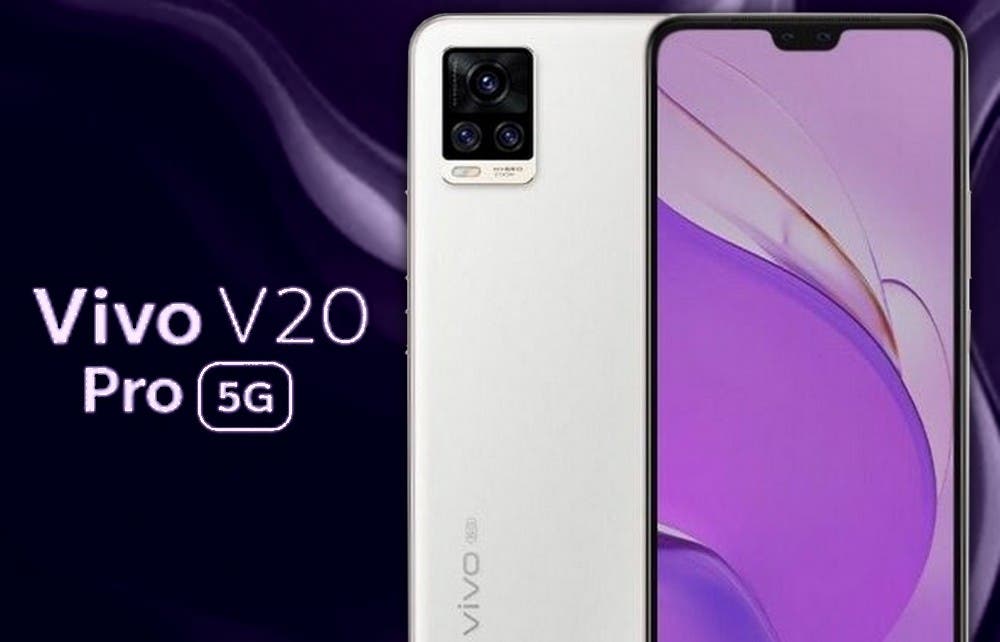
Starting from the images, the 44MP main front camera supports magnificent portraits with high-quality depth and clours. According to Vivo, this front camera even supports “extreme zooming”, not that most people will need it anyway.
Vivo V20 Pro succinct spec preview
This smartphone comes with a 6.44 inch AMOLED display that supports a resolution of 1080 x 2400 pixels. Under the hood, we have a Qualcomm Snapdragon 765G coupled with up to 8GB of RAM and 128GB of internal storage. On the rear, it uses a triple camera setup. It has a 64MP main camera with 8MP (ultrawide), and 2MP (depth) sensors. To keep its lights on, this device uses a 4000 mAh battery that supports 33W fast charging. This device comes with Funtouch 11 on top of Android 10, however, it is upgradable to Android 11.
3. OnePlus Nord
The OnePlus Nord is another unforgettable device in this list of smartphones for selfies. The OnePlus Nord is one of the company’s few mid-range smartphones. Thus, we do not expect it to come with the best features generally. However, when it comes to selfies, it’s arguably the best OnePlus selfie phone with its dual-front camera setup.
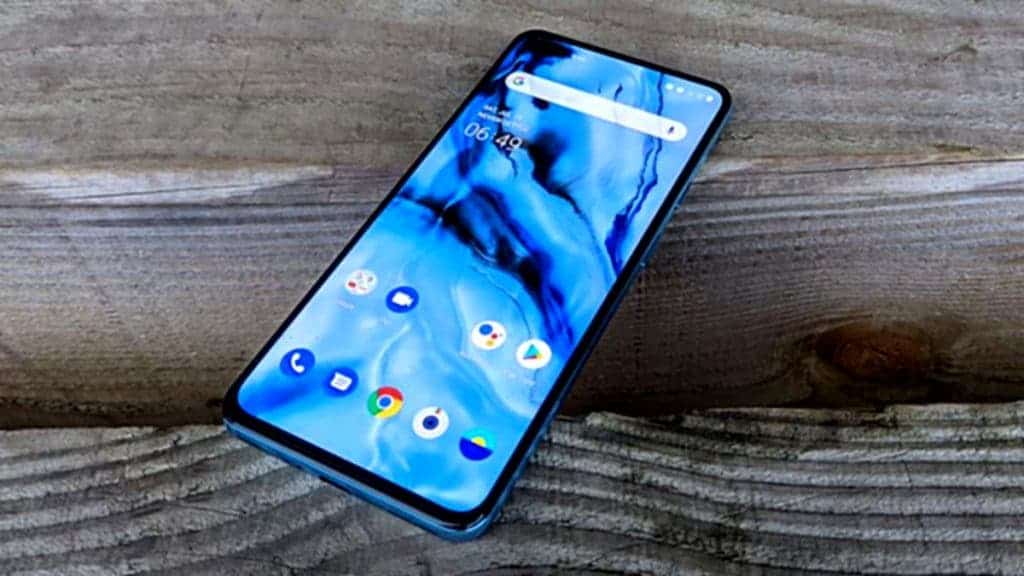
The OnePlus Nord uses a 32MP (f/2.5 wide-angle, 1/2.8″, 0.8µm) camera as well as an 8MP (f/2.5 105˚ ultrawide-angle, 1/4.0″, 1.12µm) camera on the front. The front camera also supports HDR and 4K@60fps, 4K@30fps, and 1080p@30fps videos.
If you do not like the punch-hole design, then you may not prefer the OnePlus Nord. This is because the dual front selfie camera resides in a top-left dual punch-hole. The main 32MP camera uses a Sony IMX616 sensor but it lacks any form of stabilization. However, the images are still bright and clear, especially in a bright environment. Just like the Vivo V20 Pro, the ultrawide front camera captures more people with fewer details and artificial smoothening. This device also supports portrait images but the blur is not very natural and there is no way of adjusting it.
The OnePlus Nord camera is even more impressive for capturing selfie videos. First off, the main 32MP camera supports 4K@60fps videos which makes it one of the top smartphones for selfies. In addition, the secondary 8MP camera also supports 4K videos but only at 30fps.
OnePlus Nord succinct spec preview
The OnePlus Nord uses a 6.44 inch AMOLED display that supports a 90HZ refresh rate and resolution of 1080 x 2400 pixels. This smartphone also comes with the Snapdragon 765G and supports 6GB/8GB/12GB of RAM and 64GB/128GB/256GB of UFS 2.1 storage. It uses a quad-rear camera setup. It has a 48MP main camera with 8MP (ultrawide), 5MP (macro), and 2MP (depth) sensors. To keep its lights on, this device uses a 4115 mAh battery that supports 30W fast charging. Other features include 5G wireless connectivity, Wi-Fi, Bluetooth 5.1, and OxygenOS 10.5.9 (Android 10).
4. Oppo F17 Pro
Just like Vivo, Oppo also produces smartphones with exceptionally good cameras. If you are seeking smartphones for selfies, then it’s hard to miss Oppo. The Oppo F17 Pro makes our list and its camera especially the selfie camera will just meet your need. On the front, this device uses a dual-camera setup.
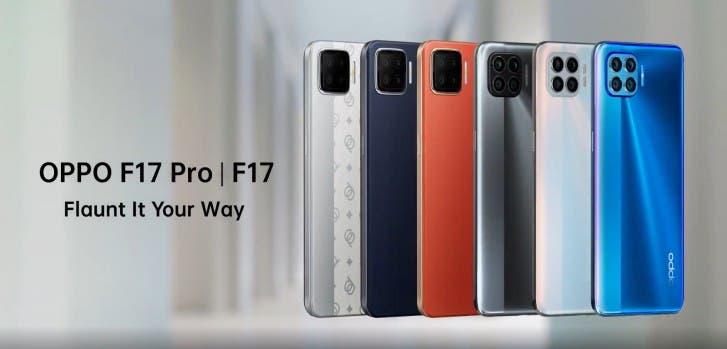
It comes with a 16MP (f/2.4 wide-angle, 1/3.09″, 1.0µm) camera as well as a 2MP (f/2.4 depth) camera on the front. The front camera also supports HDR and 1080p@30fps videos. Relative to other devices on the list, the Oppo F17 Pro may not be top-notch. However, this device has some interesting features like portrait video, colour pop mode, and Night Mode tripod setting that make it stand out.
Interestingly, the video mode of this device supports Ultra Steady stabilization and anti-shake algorithms. Not many manufacturers include stabilization features for the front camera. The final output is quite excellent with a focus on the face.
Overall, this device supports 4K, 1080p and 720p videos. However, it appears that the 1080p videos are the best especially when the user activates its aggressive EIS algorithm. For the 4K video, there is no stabilization and the output appears over-processed. Although there are a couple of smartphones for selfies above this device, it delivers just enough to be on this list.
Oppo F17 Pro succinct spec preview
This smartphone comes with a 6.43 inch AMOLED display that supports 1080 x 2400 pixels resolution. This smartphone also comes with the Helio P95 SoC and supports 8GB of RAM and 128GB of UFS 2.1 storage. It uses a quad-rear camera setup. It has a 48MP main camera with 8MP (ultrawide), 5MP (depth), and 2MP (depth) sensors. To keep its lights on, this device uses a 4015 mAh battery that supports 30W fast charging. Other features include 4G wireless connectivity, Wi-Fi, Bluetooth 5.1, and ColorOS 7.2 (Android 10).
5. Vivo X50 Pro
We have another Vivo device on the list and this time it is the “flagship” Vivo X50 Pro. Just like other Vivo smartphones, the camera department is the main selling point of this device. First off, this is the first device in the Indian market to support a Gimbal camera system. It remains one of the few smartphones for selfies in India that supports this feature. With this feature, users can get more stable videos as well as better images. The Vivo X50 Pro uses a 32MP (f/2.5 wide-angle, 1/2.8″, 0.8µm) single front camera. The front camera also supports HDR and 1080p@30fps videos.
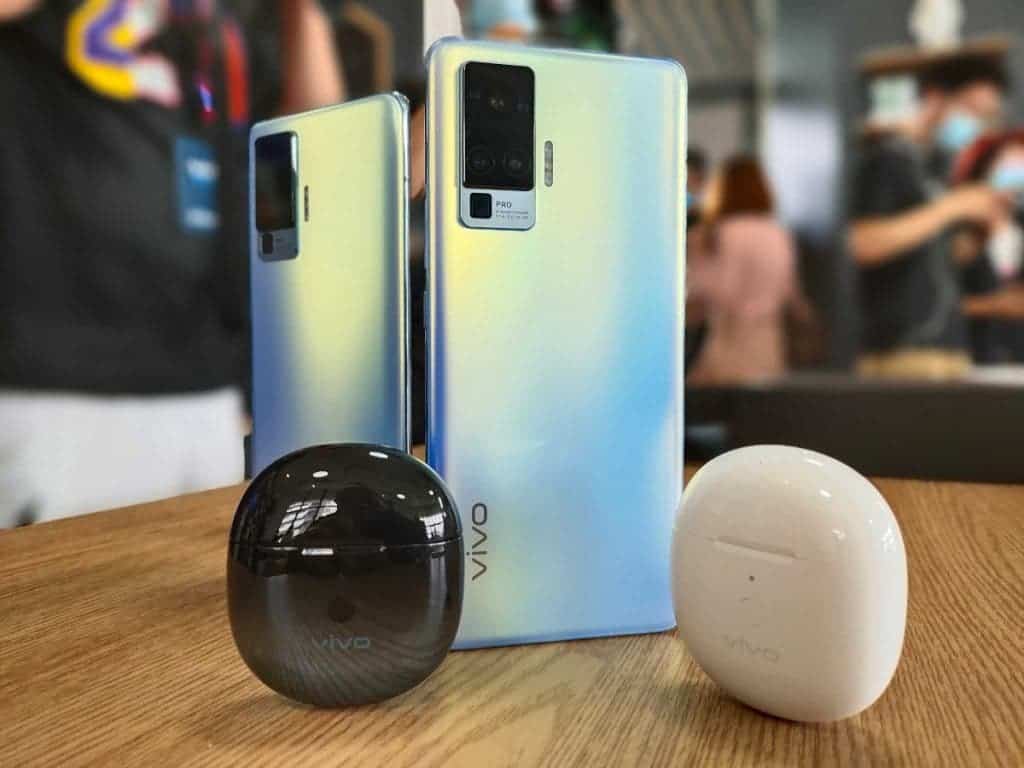
This device offers good lowlight photos and to make this more interesting is the stabilization during shooting. The stabilization feature also extends to videos. The company also did some optimization with its selfie camera. The beauty mode comes with some skin smoothening even when the beauty mode is off. This is a problem for some people because it means that the front camera technically does not capture natural images. However, users can edit the images to make them look more realistic. This should not be the case for excellent smartphones for selfies.
Irrespective of its shortcomings, the Vivo X50 Pro a pretty decent camera performance. However, users that require very natural selfie images may not want to use this device.
Vivo X50 Pro succinct spec preview
This device is powered by a Qualcomm Snapdragon 765G SoC with an active 5G connectivity. The Vivo X50 Pro has a 6.56-inch full-HD+ AMOLED display with a hole-punch at the top left corner. The panel also has a higher 90Hz refresh rate. It has 8GB of RAM and 128GB of storage. Furthermore, this device comes with a 4,315mAh battery that supports a 33W fast charge. The company claims that this battery is capable of delivering all-day battery life.
6. Samsung Galaxy Note 20 Ultra
This is the first Samsung device on this list but it will not be the only one. When it comes to Samsung, we see the relevance of the phrase “pixels doesn’t always matter”. This smartphone comes with a 10 MP 1/3.2″ single sensor with an aperture of f/2.2 and it supports phase-detect autofocus. With just 10MP, this device has perhaps one of the lowest pixel size on this list. Although Samsung does not really focus on smartphones for selfies, the company’s software optimization is great and its devices offer top-notch front camera performance.
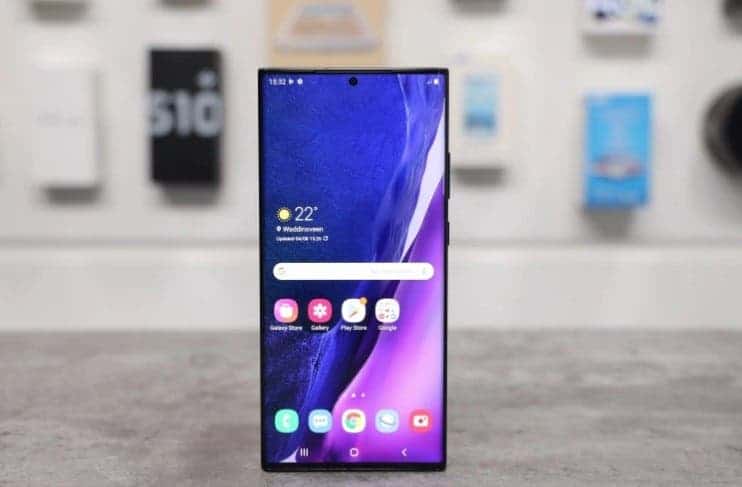
Key front camera specifications:
- Primary 10 MP 1/3.2″ sensor, 1.22µm pixels
- F/2.2 – aperture lens with 26 mm-equivalent focal length
- Dual-pixel PDAF
- Display flash
- 4K at 30/60 fps, 1080p at 30 fps
With a good dynamic range and an accurate white balance, the Samsung Galaxy Note 20 Ultra delivers excellent images in most environments. Of course, its performance in a bright environment is better than in a low-light environment. However, to get more details in a low-light environment, Samsung ensured that the screen of the phone doubles as a flashlight. This is in addition to the front flash.
The autofocus and portrait mode is top-notch. They are consistently natural and there is a perfect separation of the object from the background. This perfection ensures that no one will be blurry in a group selfie.
For videos, the front camera goes as high as 4K@60fps, thus it offers the best there is with respect to smartphones for selfies. The focus, depth of field, stabilization, and colour are other interesting aspects of this camera.
Samsung Galaxy Note 20 Ultra succinct spec preview
This device comes with a Qualcomm Snapdragon 865+ SoC. It uses a 6.9-inch Dynamic AMOLED display that supports a 120Hz refresh rate and 1440 x 3088 pixel resolution. In addition, it has 12GB of RAM and 128GB/256GB/512GB of internal storage. On the rear, it has a triple camera setup with a 108MP main sensor. Furthermore, this device comes with a 4,500 mAh battery that supports a 25W fast charge.
7. iPhone 12 Pro Max
It will be strange to compile this list and not have an Apple device. This is because Apple almost always uses a great selfie camera. In fact, we can consider Apple as one of the few brands in the industry with “many” smartphones for selfies. Although the competition is getting tougher, Apple is still holding on to its own. On paper, the iPhone 12 Pro Max selfie camera might not sound that special. After all, it comes with a 12MP f/2.2 sensor. However, the optimizations and quality are top-notch.
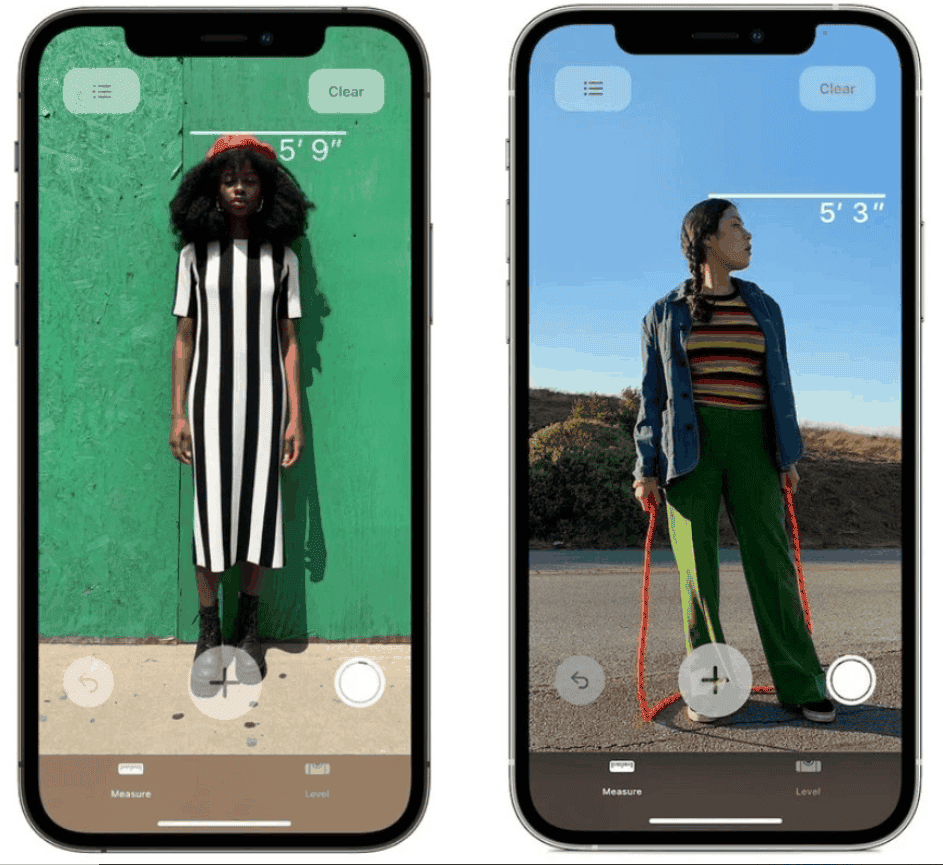
Key front camera specifications:
- Dual front camera
- 12 MP 1/3.6-inch sensor with 23 mm-equivalent f/2.2-aperture lens
- SL 3D sensor for depth estimation
- 4K 2160p Dolby Vision HDR video at 24/30/60 fps, 1080p at up to 120 fps, gyro-EIS
This device is great for quality portrait images with a depth sensor. The night mode feature is fairly good and a low-light environment is surely not a problem. Its autofocus feature ensures that faces are super clear but its performance is optimized for a 30cm to 90 cm range. However, above 90 cm, say at 120 cm, the depth of field sensor ensures that the selfies remain sharp. Looking at the bokeh, stabilization modes, and other features, the iPhone 12 Pro Max obviously stands out as one of the top-notch smartphones for selfies in the industry presently.
iPhone 12 Pro Max succinct spec preview
The iPhone 12 Pro Max comes with a 6.7 inch Super Retina XDR OLED that supports 1284 x 2778 pixel resolution and a 60Hz refresh rate. Under the hood, this smartphone uses the Apple A14 Bionic 5nm chip. This device uses 6GB of RAM and 128GB/256GB/512GB of internal storage. On the rear, it has a triple camera setup, all 12MP sensors. It includes a wide-angle, telephoto, an ultrawide angle, and a TOF 3D LiDAR sensor. The battery size is only 3687 mAh and it supports 20W fast charging and 15W wireless charging.
8. Samsung Galaxy S21 Ultra
Technically, the entire Samsung Galaxy S21 series should be on this list. However, we cant take all since they use similar features thus we are taking the best. However, Samsung’s software tricks galore, including a software-based “wide” selfie mode and the ability to choose between natural and beauty modes make this smartphone stand out.
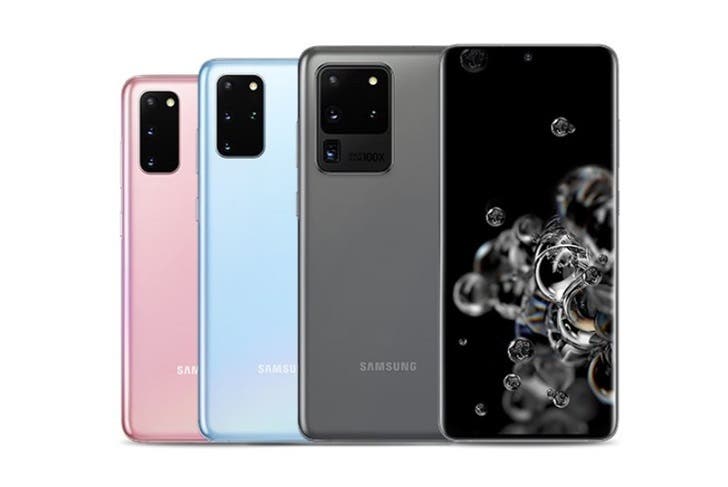
Key front camera specifications:
- Single front camera
- 40 MP, f/2.2, 26mm (wide), 1/2.8″, 0.7µm, PDAF
- Dual video call, Auto-HDR
- 4K@30/60fps, 1080p@30fps
Whatever feature you can think of such as portrait mode, night mode, stabilization, and others, this device got you covered. The video end is also great but Samsung added something to make it better. The South Korean manufacturer calls it the “Director’s View”.
On the video front, the Galaxy S21 Ultra can record 8K video up to 30 fps and all of its cameras can capture 4K video at up to 60 fps. But the coolest video upgrade is Director’s View. Interestingly, this is the same feature that Oppo and Vivo call Dual-View Mode. This mode allows users to use the Galaxy S21 Ultra to use the front and back cameras simultaneously for video recording. However, Samsung added a thumbnail to allow users to make a quick call while recording.
Samsung Galaxy S21 Ultra succinct spec preview
This device comes with a Qualcomm Snapdragon 888 SoC. It uses a 6.8-inch Dynamic AMOLED display that supports a 120Hz refresh rate and 1440 x 3200 pixel resolution. In addition, it has 12GB/16GB of RAM and 128GB/256GB/512GB of UFS 3.1 internal storage. On the rear, it has a quad-camera setup with a 108MP main sensor that supports 8K videos. Furthermore, this device comes with a 5,000 mAh battery that supports a 25W fast charge, 15W wireless charging, and 4.5W reverse wireless charging.
9. Google Pixel 5
Some readers will finally get a sigh of relief after seeing the Google Pixel 5 on this list. Not that there is anything special with the Google Pixel 5, but there is something special with Google Pixel cameras. Whoever knows smartphones should know that when it comes to camera optimization, Google is the best in the business. The front camera of the Google Pixel 5 does not disappoint as expected.
![]()
Key front camera specifications:
- 8MP 1/4.0″ sensor
- f/2.0-aperture lens with 24 mm-equivalent focal length
- Fixed focus
- Display-flash
- 1080p video at 30 fps
With only 8MP upfront, this smartphone has the smallest pixel size on this list. However, its software optimization is second to none. This smartphone is supposed to be Google’s flagship but the company had to cut some corners to reduce the cost. This of course affected the overall performance of the camera of this device.
Overall, there is not much to complain about regarding the front camera of this device. The colour output, white balance, focus, and other features are quite decent. More importantly, is that this camera puts the noise under perfect control even in low-light environments.
According to DxOMark, “the Pixel’s bokeh simulation offers good depth estimation, with only minor artifacts around the foreground subject. However, there is no blur gradient and spotlights in the background are rendered with low contrast, resulting in a slightly unnatural effect”.
Google Pixel 5 succinct spec preview
To reduce cost, Google opted to use the Snapdragon 765G, which is not entirely bad. However, relative to its competitors, it is a step behind. This smartphone comes with a 6-inch display that supports 1080 x 2340 pixel resolution as well as a 90Hz refresh rate. This device offers 8GB of RAM and 128GB of internal storage. Furthermore, this device comes with a 4,080 mAh battery that supports an 18W fast charge, 12W wireless charging, and 5W reverse wireless charging.
Huawei P40 Pro+
This list will not be complete without the mention of Huawei. On DxoMax camera ranking, Huawei smartphones are the top two. In all honesty, the Huawei P40 series comes with some of the best selfie cameras in the industry. However, just like with the iPhone 12 series and Samsung Galaxy S21 series, this list can not take all the phones in the P40 series thus we just use only the top version.
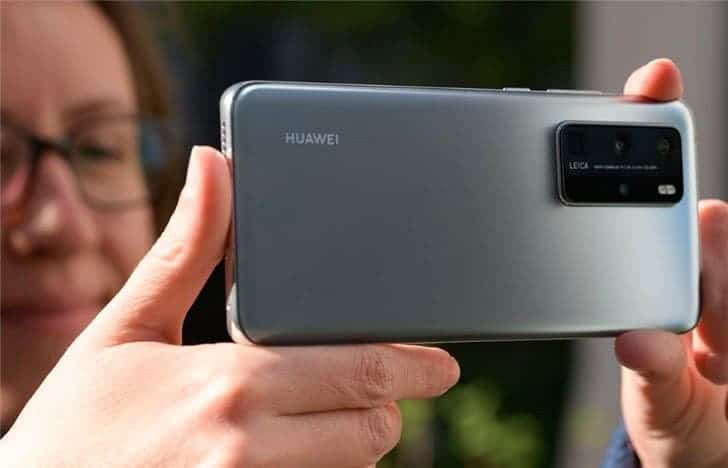
Key front camera specifications:
- Dual front camera
- 32 MP, f/2.2, 26mm (wide), 1/2.8″, 0.8µm, AF
- 26mm-equivalent f/2.2-aperture autofocus lens
- IR 3D sensor for depth estimation and autofocus
- 4K 2160/30fps video
Just like other devices on this list, the Huawei P40 comes with Face Beautification. With this feature, you just relax and let the phone do all the editing for you.
One of the strengths of the Huawei P40 Pro+ is its noise reduction, good colour exposure, and excellent bokeh. With the dedicated IR sensor, the bokeh shots are nothing short of excellent. This sensor provides accurate depth estimation and masking around the subject during background blur.
While the focus is great, it is probably the only aspect of this camera that the industry has better. Nevertheless, the focus capture faces perfectly at close range but appears to lose details as the distance gets longer (even using a selfie stick).
Whether you are dealing with indoor or outdoor shooting, the Huawei P40 Pro+ is pretty impressive. The accurate autofocus and image stabilization make this camera even more attractive. Overall, there is very little or nothing to complain about with the Huawei P40 Pro+
Huawei P40 Pro+ succinct spec preview
Before you fall in love with any Huawei device presently, it’s important to know that it does not come with Google Mobile Services. This means that you can have access to Google Play Store. No Gmail, Google Map, YouTube, nothing. Thus, if you are living outside China, you may want to think about this before you consider this device. Although Huawei has HMS, which is supposed to be an alternative for GMS, it is not quite at GMS’s level and is still lacking some relevant apps. However, if GMS is not a problem, this smartphone has some interesting specs
The Huawei P40 Pro+ comes with Kirin 990 SoC coupled with 8GB of RAM and 256GB/512GB of internal storage. Furthermore, this device uses a 6.58-inch display that supports 1200 x 2640 pixel resolution as well as a 90Hz refresh rate. Under the hood, there is a 4,200 mAh battery that supports a 40W fast charge, 40W wireless charging, and 27W reverse wireless charging. The battery department is one of the selling points of this smartphone. As of now, there are not many smartphones with 40W wireless charging capacity in the industry.
Conclusion
It is important to note that this list does not arrange these smartphones in any particular order. However, for January and February 2021, these are the devices that we consider to have a top-notch selfie camera performance. We will have a new edition of the top 10 smartphones for selfies in April. By then, we hope that the industry will have some amazing devices to shake things up a little.
As this is our first attempt on this bi-monthly (every two months) column, we will appreciate your input and suggestion. Our target is not just to list smartphones but to add as many details as possible to buttress our point. If you have any contribution(s) to this column, let us know in the comment section below. We will review your idea and if it’s good, we will incorporate it for our April edition.
For now, what do you think about the list? Is your favorite selfie phone missing? Let us know your thoughts in the comment section below

